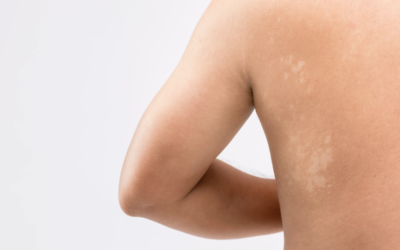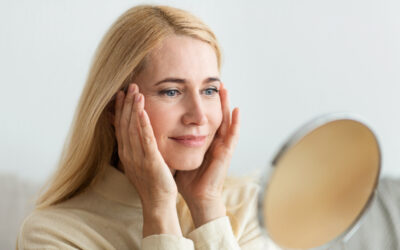Birth Marks & Brown Spots
Birthmarks
Prior to laser treatment birthmarks could not be treated very successfully, but advances in laser technology has revolutionised the treatment of birthmarks. Birthmarks are often referred to medically as naevi as the word Naevus is derived from the ancient Greek for “maternal impression”. Birthmarks fall into 2 main categories either Vascular or Pigmented.
Vascular Birthmarks
The commonest vascular birthmark is the Port Wine Stain. These are birthmarks which can range from diffuse pinkness through to dark red/purple stains which are often lumpy. Laser treatment can result in a significant improvement by flattening the lumps and lightening the skin.
Some vascular birthmarks such as Strawberry Naevi usually disappear in the first few years of life and as such treatment is avoided unless absolutely necessary.
Pigmented Birthmarks
Pigmented birthmarks involve areas of increased melanin pigment resulting in brown marks on the skin. These may be largely in the surface (epidermal) layer of the skin such as café au lait macules or in the deeper (dermal) layer of the skin such as Naevus of Ota and Naevus of Ito.
Which laser?
The choice of laser for treating birthmarks will depend on whether the birthmark is comprised of blood vessels or a pigmented birthmark and comprised of melanin pigment. To treat vascular birthmarks such as the Port Wine Stain the laser of choice is the Pulse Dye Laser. In treating pigmented birthmarks the choice of optimal laser will depend on the depth of the melanin pigment. In general shorter wavelength (532nm) lasers are used for epidermal birthmarks and longer wavelengths (1064nm) are used for dermal birthmarks. At Geelong Veins, Skin and Laser we have a range of lasers including both short and long wavelength lasers which enables us to tailor treatment to individual requirements.
How many treatments?
Vascular and pigmented birthmarks often require multiple treatments and sometimes some cannot be completely removed with any number of treatments.
Brown Spots
Just about everyone has a few obvious brown spots on their skin. Freckles, ‘sunspots’, ‘age spots’, ‘liver spots’, and various birthmarks are just a few of the commonly known marks, generally referred to as pigmented lesions. Although most brown spots are easily ignored, many are quite conspicuous and can detract form your skins natural beauty.
What causes brown spots?
Melanin is what gives our skin colour. Whether dark or light complexioned, we all have varying amounts of melanin. Pigmented lesions are dark in colour simply because melanin is abnormally concentrated in one area of the skin. High concentrations of melanin can be due to various factors. Some types are present at birth, but most occur with age or as a result of overexposure to the sun’s damaging rays.
Laser treatment of brown spots
Pigmented lesions can be successfully lightened or removed with modern laser technology when the laser passes through the skin and is absorbed by abnormal concentrations of melanin causing shattering of the melanin pigment. Scavenger cells in the immune system pick up the shattered pigment and eliminate it. The rapid absorption of light energy causes the melanin to destruct to a point where the melanin concentration is reduced, leaving the treated skin looking uniform in colour and texture. In general superficial pigmented lesions are treated with shorter wavelength laser systems and deeper pigmented lesions are treated with longer wavelength systems.
How many treatments are necessary?
Superficial pigment often fades after only one treatment but conditions that have deeper pigment may require several treatments. Treatments with pigment lasers are generally spaced 6 or more weeks apart to allow the immune system time to eliminate the shattered pigment.
Can all brown spots be treated?
Importantly the laser cannot be used for the removal of pigmented lesions that are cancerous or suspicious of being cancerous. If you have a past history of a melanoma (or a first degree relative has had a melanoma) we recommend you avoid laser treatment of brown spots. If there is any doubt, your doctor will discuss the appropriate treatment options with you.
Meet one of our Dermal Therapists – Charlotte
Charlotte it a fully qualified Beauty Therapist after graduating in early 2016. Charlottes love for the science behind beauty encouraged her to further her studies and is currently in the final year of a degree in Dermal Science at Victoria University.
She offers extensive knowledge of all skin conditions and disorders and is most passionate about educating her clients on the science behind the skin and how it should be taken care of. Charlotte can treat difficult pigmentation and vascular disorders opting for the use of laser therapies, BBL (Broad Band Light), chemical peels and more. Charlotte also treats unwanted hair using medical grade laser hair removal and electrolysis.
Meet one of our Medical Skin Experts – Dr Barbra Ward
Dr Ward is an experienced in skin dermoscopy and offers medical skin cancer checks and excisions. She is also able to treat birthmarks, vascular skin lesions and fungal nail infections with the latest laser techniques.
From the Blog
Pityriasis Alba
What is Pityriasis Alba? Classic Pityriasis Alba is a skin disorder that is usually asymptomatic and mildly itchy, it is characterized by moderately scaly hypopigmented (skin lacking pigment) macules that are poorly defined. Pityriasis Alba can last for months up to...
What are the best anti-aging products?
At Geelong Veins Skin and Laser we are committed to stocking the best anti-aging products that are clinically proven to cause a positive change in the skin. Synergie Skin and O Cosmedics are two results driven skin care brands stocking a wide variety of scientifically...
Is it just ‘’dry skin’’ or could it be one of these skin conditions?
Is my itchy dry skin a skin condition? For many people winter can mean dry, itchy, rough, and sensitive skin. If you struggle with dry skin during the winter months you are definitely not alone, it is something we have all experienced and we all dread as the weather...


